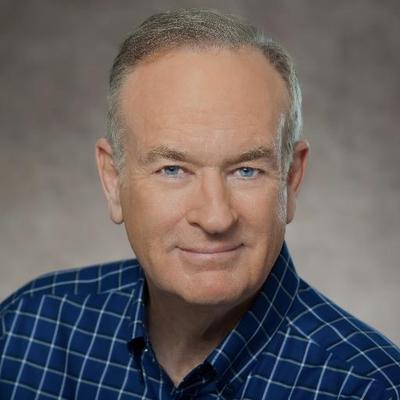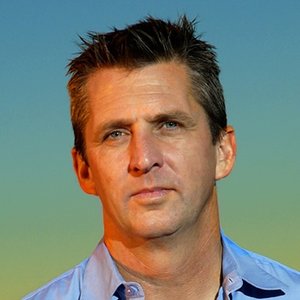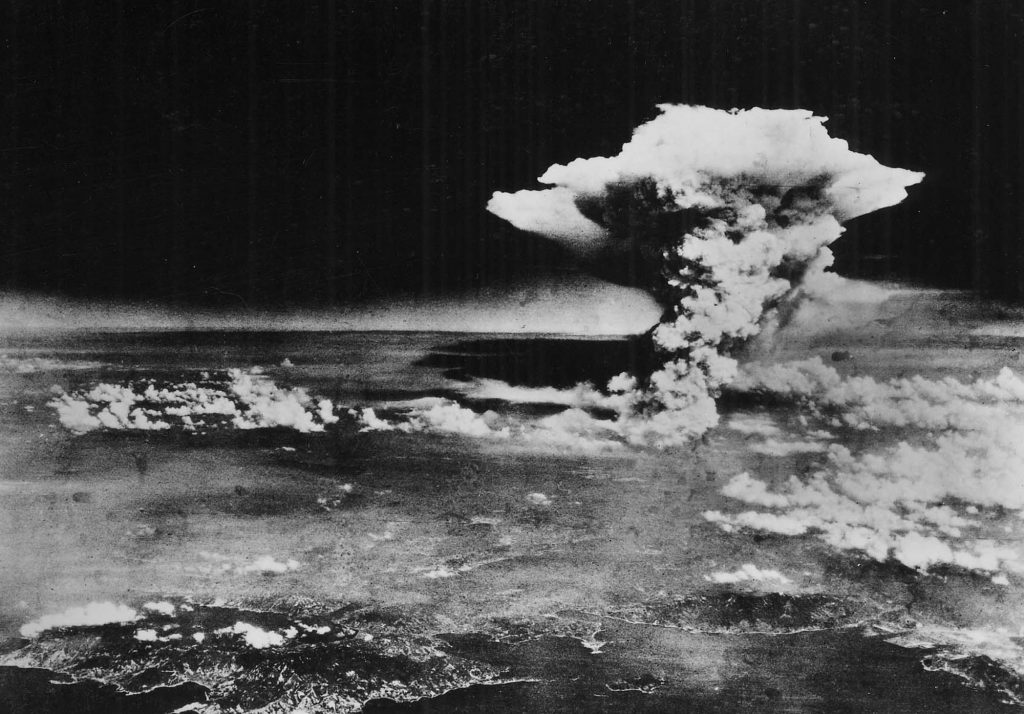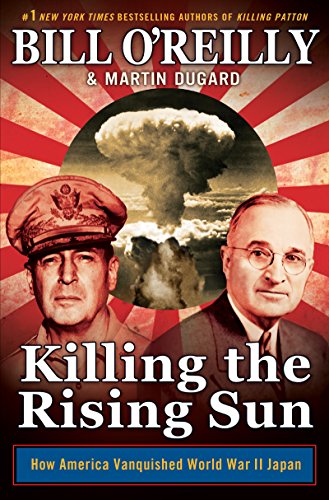Killing the Rising Sun Summary
8 min read ⌚
OUr “Killing the Rising Sun Summary” includes a short recapitulation of the Pacific War and a long justification of why the U.S. had no choice but to use the atomic bomb to win it.
How America Vanquished World War II Japan
The Second World War was the most global war in history and the deadliest conflict since the dawn of humankind. And it ended barely seven decades ago!
Yet – Bill O’Reilly and Martin Dugard claim – we’ve forgotten most of it. Especially Americans – when it comes to the Pacific War. Even though “the issues of that war are still being processed throughout the world today.”
Their book, “Killing the Rising Sun,” should serve as a thriller-like novelistic reminder to everyone of what actually happened after Pearl Harbor.
Who Should Read “Killing the Rising Sun”? And Why?
“Killing the Rising Sun” is the sixth book in Bill O’Reilly’s and Martin Dugard’s “Killing” series.
The series started to relatively warm reviews with “Killing Lincoln” which was turned into a successful TV movie just two years after being published. The same happened with “Killing Kennedy” and “Killing Jesus;” both of which were subsequently nominated for few awards.
Due to their controversial nature, the fourth and fifth book in the series, “Killing Patton” and “Killing Reagan,” were not as well-received by the critics, but were bestsellers nevertheless, with the latter one adapted as a movie once again.
Even though in “Killing the Rising Sun,” O’Reilly and Dugard move from “killing” historical figures to “killing” a whole nation, if you’ve ever read either of these five books or watched any of the four films – you already know what to expect from this one.
You won’t be disappointed. However, people interested in fact-based historiography may as well be; mainly, due to the fact that (just like the previous books in the series), “Killing the Rising Sun” is once again somewhat subjective.
Those who like to read historical novel may have a ball reading “Killing the Rising Sun” – since the book is a suspenseful pot boiling page-turner. Even though, unlike most of the historical novels you’ve read, this one’s not allowed by genre to steer away from actual historical data.
About Bill O’Reilly & Martin Dugard
Bill O’Reilly is an American journalist and television host.
is an American journalist and television host.
He came to prominence during the early 1990s and became a national celebrity after joining the “Fox News Channel” as the host of “The O’Reilly Factor,” the highest-rated cable news show for over a decade and a half.
In April 2017, however, “Fox News” had to terminate O’Reilly’s contract, in view of a “New York Times” article, revealing that Bill O’Reilly had paid six women nearly $50 million to settle as many sexual harassment lawsuits.
Martin Dugard is an American author, primarily focused on writing narrative non-fiction. He has co-authored – with O’Reilly – all six (about to become seven) books in the “Killing” series.
is an American author, primarily focused on writing narrative non-fiction. He has co-authored – with O’Reilly – all six (about to become seven) books in the “Killing” series.
In addition, he has written the critically well regarded “The Last Voyage of Columbus,” “Into Africa,” “Farther Than Any Man,“ a few sports-related books, and a screenplay for a movie, “A Warrior’s Heart.”
“Killing the Rising Sun PDF Summary”
Five days after 9/11, Barack Obama’s longtime pastor, Reverend Jeremiah Wright Jr., commented on the event in a church sermon which included “a stunning anti-American diatribe.”
Among other things, as the U.S. public found out about seven years later when the media uncovered the speech, Wright said the following:
“We bombed Hiroshima. We bombed Nagasaki. And we nuked far more than the thousands in New York and the Pentagon… America’s chickens are coming home to roost.”
In other words, Wright was saying that there may have been a reason why 9/11 happened. And that one needn’t go further than the Second World War to unearth it. As you sow, so shall you reap. What goes around comes around.
Bill O’Reilly and Martin Dugard decided to write “Killing the Rising Sun” upon hearing this and realizing that nowadays it goes largely unchallenged.
Have we forgotten – they ask – what led to the U.S. dropping the A-bombs over Japan? And what could have happened if America didn’t do that?
“Killing the Rising Sun” tries to answer these questions, jumping back and forth from the Pentagon to the Philippines, from Los Alamos (where the mysterious J. Robert Oppenheimer was working on the atomic bomb) to Tokyo (where the Japanese adored their Emperor Hirohito as if a deity). But, the real beginning of the book may go way back to 17th century Japan and the samurai code of bushido.
Initially a hazy concept analogous to the medieval chivalric model of behavior, bushido became the central part of the Japanese war propaganda during the years preceding the Second World War. It was indoctrinated to the point of presenting war as purifying, and death as duty.
Its result?
No-surrender soldiers.
Unsurprisingly, though outmatched both in numbers and technology, the Japanese won battle after battle against America and the allies, culminating in General Douglas MacArthur’s escape from the Philippine island of Corregidor. Up to that moment a symbol of Allied resistance, MacArthur had to back out of further fighting. President Roosevelt feared that the Japanese might capture or even murder him.
When MacArthur got to Australia on 21 March 1942, he made a famous speech, declaring: “I came through and I shall return.”
“Almost one thousand days after fleeing the Philippines,” write O’Reilly and Dugard, General Douglas McArthur would do exactly that. The liberation of the Philippines began on October 20, 1944.
It would not end, however, until August 15, 1945.
Six days before that, “Bockscar,” a Boeing B-29 Superfortress piloted by Major Charles W. Sweeney, would drop the “Fat Man” over Nagasaki. And three days before this happened, “Enola Gay,” the same type of plane, became the first aircraft to drop an atomic bomb, code-named “Little Boy.” The pilot was Colonel Paul W. Tibbets, Jr.; the city: Hiroshima.

Now, we all know what happened to the citizens. Some of them – like, say, Mrs. Aoyama – were literally “vaporized” on the sport. Others died in terrible torment. And some say that there are related health issues even today, more than seventy years later.
O’Reilly and Dugard don’t try to blur this in no manner whatsoever. However, even though they portrait Franklin Roosevelt as a severe human rights offender – according to them, responsible for incarcerating hundreds of thousands of Japanese-Americans after the Pearl Harbor Attack and for allowing the Soviet Union post-war control of Eastern Europe – they have no problem with Harry Truman’s decision to drop the bombs.
Even more, they think that it was more than justified.
Because, as we said above, the Japanese wouldn’t surrender at no cost. And to make matters worse, after winning the war against Hitler, Stalin’s Soviet Union started an offensive against Japan from the North. So, there were two ways to end the war: either by using an A-bomb or by launching a land invasion.
The latter would have resulted in a joint intervention with the Soviets, which would have meant a substantial communist presence in Japan as well (in addition to Germany). Even more seriously, it would have probably claimed almost a million American lives.
Being a leader of the U.S., imply Dugard and O’Reilly, means making tough decisions. Dropping the A-bombs was one such decision.
But, nevertheless, it was the right one.
Key Lessons from “Killing the Rising Sun”
1. Americans Have Forgotten Their Own History
2. The Japanese Fight to the Death
3. The A-Bombs Prevent Millions of Deaths and a Communist Japan
Americans Have Forgotten Their Own History
Bill O’Reilly and Martin Dugard wrote, “Killing the Rising Sun” as an attempt to counter the not-true-enough claims of many who believe that the dropping of the nuclear bombs on Hiroshima and Nagasaki was a severe offense against human rights.
According to them, Americans need to relearn their history – because forgetting it makes them susceptible to manipulation and alternate facts.
The Japanese Fight to the Death
Remember General Patton’s most famous quip?
“No bastard ever won a war by dying for his country. You won it by making the other poor dumb bastard die for his country.”
Well, the problem of the Pacific War stemmed from the Japanese thinking otherwise. According to their bushido code, dying in a war was honorific. And surviving it as a loser – was much worse than death.
Consequently, there was no way to win against Japan other than total annihilation.
The A-Bombs Prevent Millions of Deaths and a Communist Japan
Speaking of which – on August 6 and August 9, 1945, the U.S. dropped atomic bombs on the Japanese cities of Hiroshima and Nagasaki. The effects – everybody knows – were devastating.
According to Bill O’Reilly and Martin Dugard – not nearly as the ones which we would have seen had it been otherwise. Because, if the United States hadn’t nuked Japan, they would have had to start a joint Soviet-American invasion. This would have resulted in a strong communist presence in Japan after the war.
And, even more frighteningly – it would have claimed up to a million American lives.
Like this summary? We’d like to invite you to download our free 12 min app, for more amazing summaries and audiobooks.
“Killing the Rising Sun” Quotes
When you have to deal with a beast you have to treat him as a beast. It is most regrettable but nevertheless true. Share on X ’It was kill or be killed,’ Marine Corps private Dan Lawler will later remember. ‘The Japs didn’t take prisoners, so we didn’t take prisoners either. Share on X Hiroshima and Nagasaki have been built in remarkable fashion, with almost all buildings possessing the same concrete-and-steel constitution as those structures that survived the initial blasts. Share on X Douglas McArthur knows the value of good publicity and he has carefully choreographed his landing so that the images of this great moment will soon be splashed across front pages around the world. Share on X I think Harry Truman did the right thing. Thousands of Americans would have died invading Japan. Maybe even me. (A letter from George Bush to Bill O’Reilly, dated January 5, 2016) Share on XOur Critical Review
In the introduction to “Killing the Rising Sun,” Bill O’Reilly claims that what he and Martin Dugard are about to share with the world is “true and stark” and “vital to understanding.” While the latter is inevitably correct, the former is, unfortunately, not.
And this is not because Bill O’Reilly has merely a BA in history and is primarily a journalist, and it is also not because Martin Dugard has no background in the area whatsoever.
But it is for the straightforward reason that “Killing the Rising Sun” is written by someone with an agenda; and, ever since Herodotus, real historiography is usually thought of in terms of impartiality and objectiveness.
If you like Bill O’Reilly’s views, you’ll certainly love this book. It will instill within you a patriotic feeling of the sort which makes your back tingle and your hair stand straight up.
If you don’t like him, however, then – you will find much less. The book is indeed not the best on the subject and is way too biased. Because, as a “USA Today” review stated at the time, O’Reilly “views history as another lens through which he can view himself.”
Emir is the Head of Marketing at 12min. In his spare time, he loves to meditate and play soccer.








